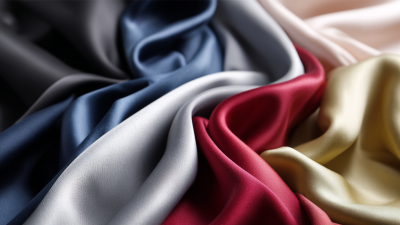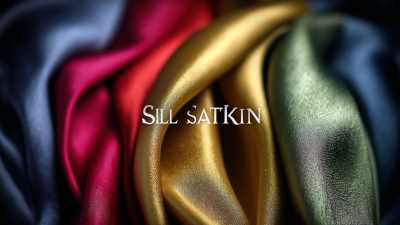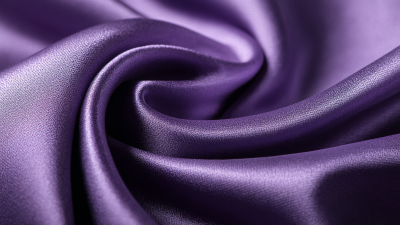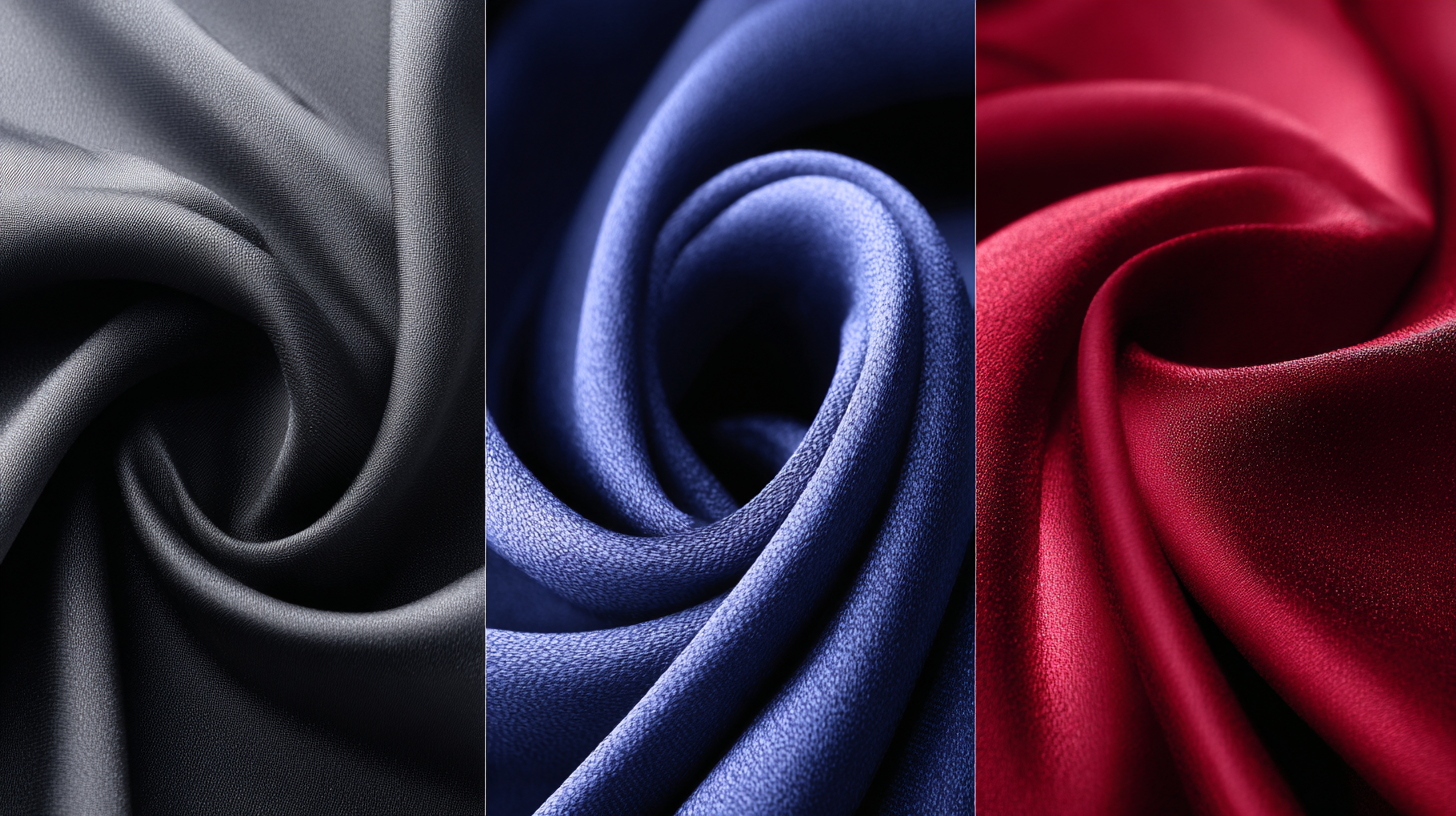 Silk satin fabric is often revered as a symbol of luxury and elegance in the textile industry, celebrated not only for its sumptuous feel but also for its beneficial properties. According to the Textile World publication, the silk market is projected to reach USD 18 billion by 2026, highlighting its enduring popularity and demand. The unique weave of silk satin results in a smooth, glossy surface that reflects light beautifully, making it a top choice for high-end clothing and home décor. Furthermore, its hypoallergenic qualities and breathability contribute to comfort, which experts from the International Journal of Dermatology have noted as vital for sensitive skin. As we delve into the science behind silk satin fabric, we will explore the myriad of benefits it offers, not only in terms of aesthetics but also in functional attributes that enhance the wearer’s experience.
Silk satin fabric is often revered as a symbol of luxury and elegance in the textile industry, celebrated not only for its sumptuous feel but also for its beneficial properties. According to the Textile World publication, the silk market is projected to reach USD 18 billion by 2026, highlighting its enduring popularity and demand. The unique weave of silk satin results in a smooth, glossy surface that reflects light beautifully, making it a top choice for high-end clothing and home décor. Furthermore, its hypoallergenic qualities and breathability contribute to comfort, which experts from the International Journal of Dermatology have noted as vital for sensitive skin. As we delve into the science behind silk satin fabric, we will explore the myriad of benefits it offers, not only in terms of aesthetics but also in functional attributes that enhance the wearer’s experience.
Silk satin is a luxurious fabric renowned for its smooth texture and glossy sheen, deriving its origins from ancient China. The process of producing silk satin begins with sericulture, where silkworms are nurtured to spin their cocoons. These cocoons are then harvested and boiled to extract the long silk threads. Once the threads are gathered, they undergo spinning and weaving to create satin, which is characterized by a high thread count and a unique weaving technique that places more warp threads on the surface than weft threads, resulting in its distinctive luster.
The production of silk satin is both an art and a science. While the traditional methods have been preserved for centuries, modern innovations in dyeing and finishing techniques have greatly enhanced the fabric's appeal. After weaving, silk satin can be treated with various finishes to increase its durability and maintain its luxurious feel. This careful balance of craftsmanship and technology not only showcases the beauty of silk satin but also emphasizes its benefits, such as breathability, moisture-wicking properties, and hypoallergenic qualities, making it a preferred choice for apparel and bedding alike.
Silk satin fabric stands out for its unique blend of comfort and elegance, making it a popular choice for various clothing items, especially dresses and sleepwear. Its smooth texture and luxurious sheen provide a sense of indulgence that is hard to match. The lightweight nature of silk satin allows it to drape beautifully over the body, enhancing the silhouette while offering freedom of movement. Whether in the form of flowing midi dresses for fall or cozy silk pajamas, this fabric perfectly balances practical comfort with a refined appearance.
Tips for Choosing Silk Satin:
When selecting silk satin garments, consider pieces that are versatile enough for various occasions, from casual outings to formal events. Opt for darker colors in winter to embrace seasonal trends while maintaining elegance. Additionally, ensure that items are easy to care for; many modern silk pieces are machine washable, allowing for effortless maintenance without sacrificing luxury.
The rising trend of satin shorts is a perfect example of how silk satin can transition from loungewear to chic outfits suitable for daytime outings. With their ability to elevate any wardrobe, satin skirts and slips are also must-haves, effortlessly pairing with both casual and dressy tops. Embracing these unique properties of silk satin will not only enhance your style but also provide a level of comfort that keeps you feeling fabulous all day long.
Silk satin fabric, renowned for its luxurious feel and elegant drape, also boasts remarkable health benefits, particularly for skin and hair. Studies published in dermatological journals indicate that sleeping on silk satin pillowcases can significantly reduce the incidence of skin irritations and acne flare-ups. This is largely due to silk's breathable nature and hypoallergenic properties, which help maintain optimal moisture levels on the skin, promoting a clearer and more youthful appearance. A study by the American Academy of Dermatology suggests that individuals who use silk for their bedding experience less friction, thereby minimizing the development of sleep lines and wrinkles.
In addition to skin benefits, silk satin is also highly advantageous for hair health. Research from the International Journal of Trichology emphasizes that the smooth texture of silk helps reduce friction between hair and fabric, which can lead to less breakage and frizz. Furthermore, silk’s moisture-wicking properties aid in retaining beneficial oils in the hair, resulting in improved shine and overall texture. This is particularly beneficial for individuals with curly or textured hair, who often struggle with dryness and damage from traditional cotton pillowcases. By switching to silk satin, users can enhance their hair's health and appearance, supporting the notion that investing in quality fabric can yield profound benefits beyond mere aesthetics.

Caring for silk satin fabric is essential for maintaining its luxurious feel and extending the life of your garments. One important tip is to wash silk satin items gently, either by hand or using a delicate cycle with cold water and a mild detergent. Avoid wringing out the fabric, as this can damage its fibers; instead, lay it flat on a clean, dry towel to remove excess water. Additionally, keep silk satin away from direct sunlight to prevent fading and damage.
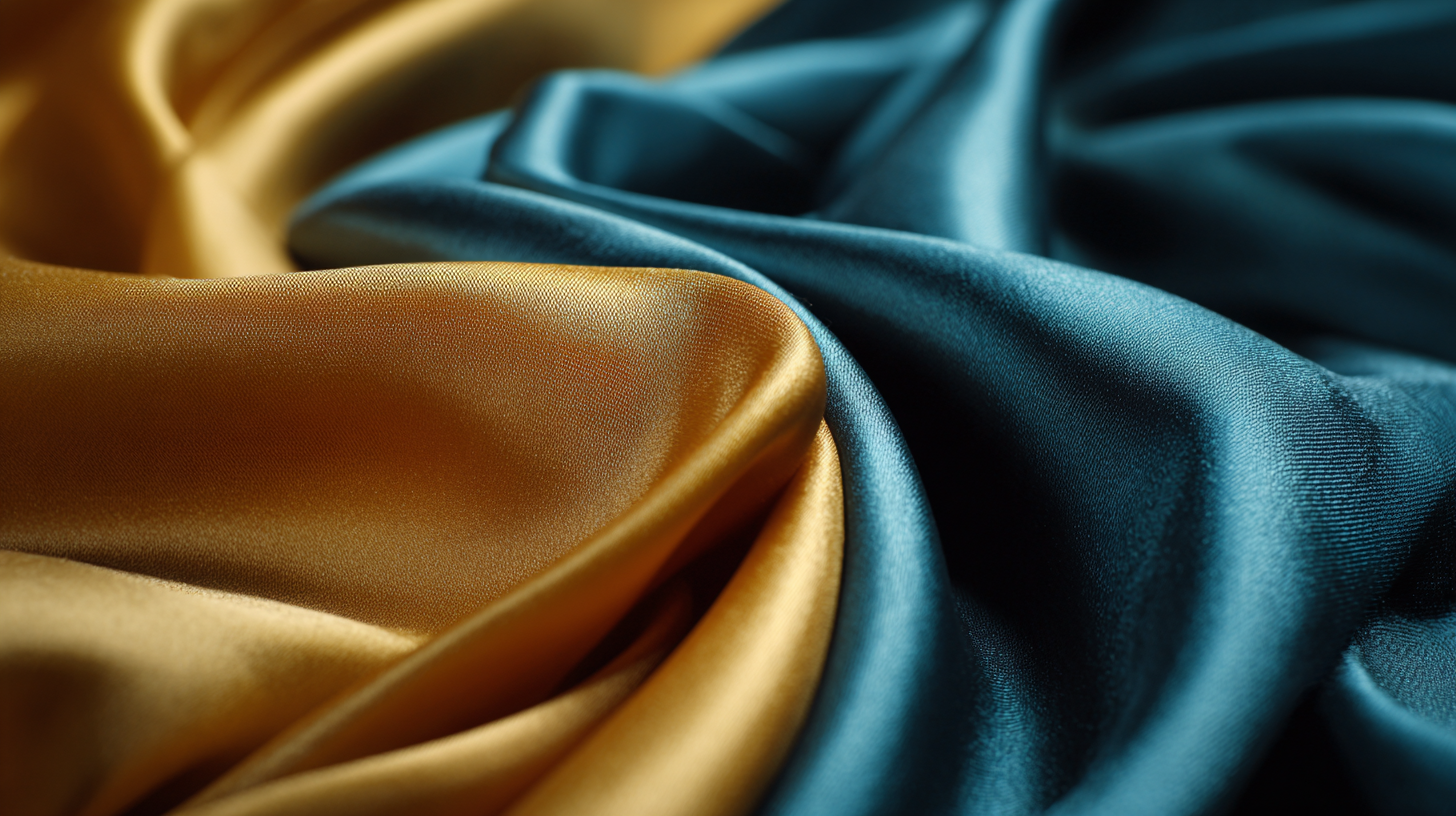
Proper storage is also key to longevity. Store silk satin pieces in a cool, dry place, ideally in a breathable garment bag to protect against dust and potential pests. Moth-proofing your wardrobe is crucial; consider using natural repellents to keep moths at bay while avoiding harsh chemicals that can harm the fabric. By following these maintenance tips, you can enjoy the beauty and comfort of silk satin for years to come, ensuring your investment in slow fashion pays off both for the planet and your wardrobe.
Silk satin fabric has emerged as a premium choice across various applications, particularly in fashion and home décor. The luxurious sheen and soft texture of silk satin not only evoke elegance but also provide unique advantages. According to a report by Statista, the global luxury fabric market is projected to reach $29 billion by 2025, with silk remaining a significant contributor due to its versatility and appeal. Designers frequently incorporate silk satin into evening gowns, bridal wear, and casual dresses, underscoring its ability to enhance any silhouette and create an effortlessly chic look.
Beyond fashion, the use of silk satin in home décor is rapidly gaining traction. A survey conducted by the Home Textile Association reveals that 60% of consumers are increasingly interested in using natural fibers like silk for bedding and upholstery. Silk satin is prized for its hypoallergenic properties, moisture-wicking abilities, and temperature-regulating qualities, making it an ideal choice for luxury linens and cushions. The adoption of silk satin in this sector not only elevates aesthetics but also contributes to a healthier living environment, as it resists dust mites and allergens, thereby promoting better sleep quality. As trends in sustainable and luxurious living thrive, the demand for silk satin will undoubtedly continue to grow.
| Dimension | Description | Benefits | Versatile Uses |
|---|---|---|---|
| Texture | Smooth and soft surface | Enhanced comfort against the skin | Clothing, bedding, accessories |
| Breathability | Allows air circulation | Keeps the body cool | Lingerie, summer wear, sleepwear |
| Luster | Shiny, luxurious appearance | Adds elegance to products | Bridal wear, evening gowns, formal dresses |
| Insulation | Retains heat effectively | Keeps warm in colder climates | Winter clothing, luxury blankets |
| Hypoallergenic | Less likely to cause allergic reactions | Gentle on sensitive skin | Bedding, pillowcases, scarves |
